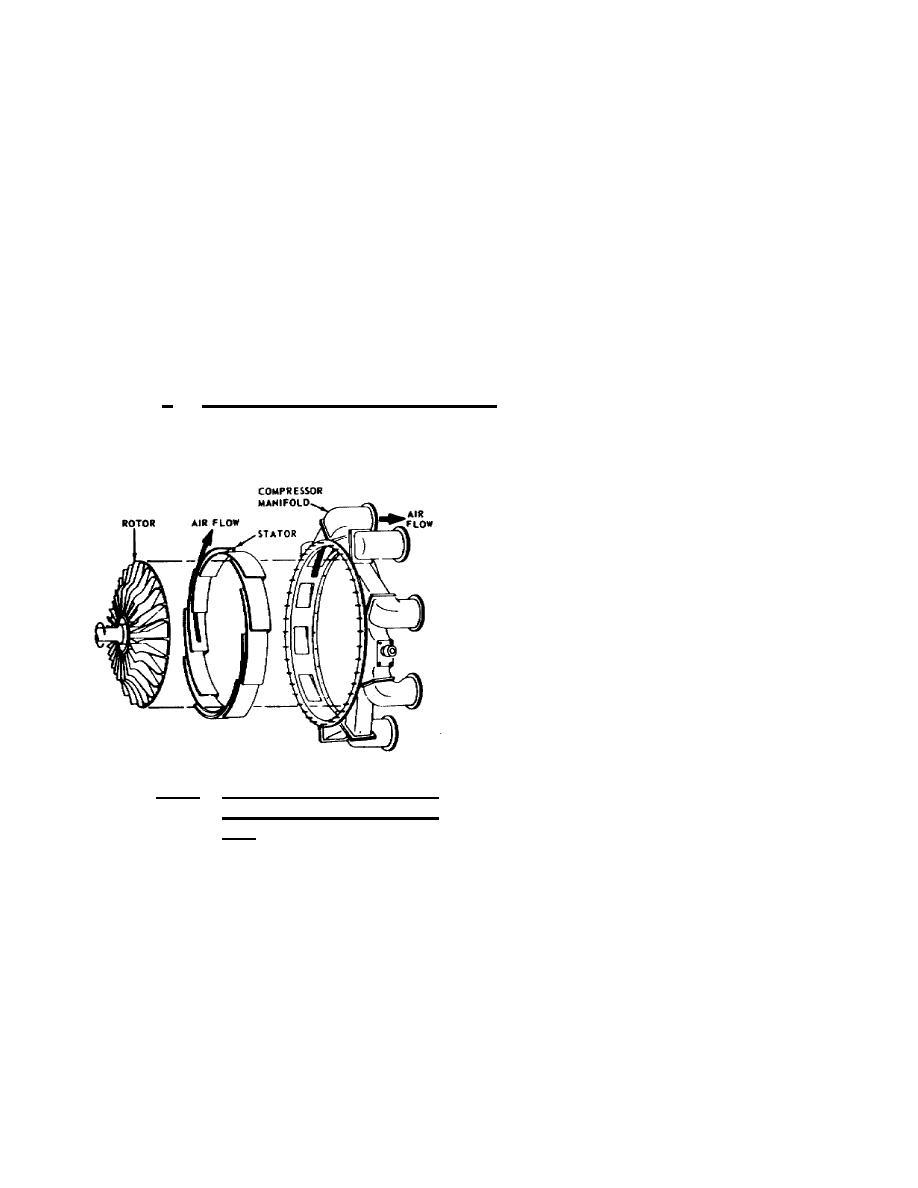
with the power output. If output power is increased, N1 rpm will
increase and vice versa. Thus, the weight of air pumped by the
compressor rotor is determined by rpm and air density.
Compressor efficiency determines the power necessary to create
the pressure rise of a given airflow, and it affects the temperature
change which takes place in the combustion chamber. Therefore, the
compressor is one of the most important components of the gas turbine
engine because its efficient operation is the key to overall engine
performance. The following subparagraphs discuss the three basic
compressors used in gas turbine engines: the centrifugalflow, the
axialflow, and axialcentrifugalflow compressors. The axial
centrifugalflow compressor is a combination of the other two and
operates with characteristics of both.
a. Centrifugalflow compressor. Figure 1.12 shows the basic
components of a centrifugalflow compressor: rotor, stator, and
compressor manifold.
As the impeller (rotor)
revolves at high speed, air is
drawn into the blades near the
center.
Centrifugal force
accelerates this air and causes
it to move outward from the axis
of rotation toward the rim of the
rotor where it is forced through
the diffuser section at high
velocity and high kinetic energy.
The pressure rise is produced by
reducing the velocity of the air
in the diffuser, thereby
converting velocity energy to
pressure energy. The centrifugal
compressor is capable of a
Figure 1.12. Typical Singlestage
relatively high compression ratio
Centrifugal Compres
per stage. This compressor is
sor
not used on larger engines
because of size and weight.
Because of the high tip speed problem in this design, the
centrifugal compressor finds its greatest use on the smaller engines
where simplicity, flexibility of operation, and ruggedness are the
principal requirements rather than small frontal area and ability to
handle high airflows and pressures with low loss of efficiency.
28



 Previous Page
Previous Page
